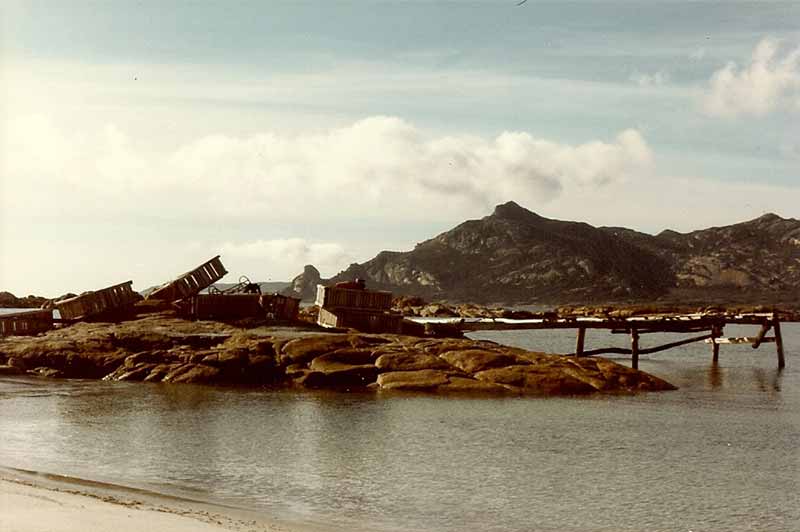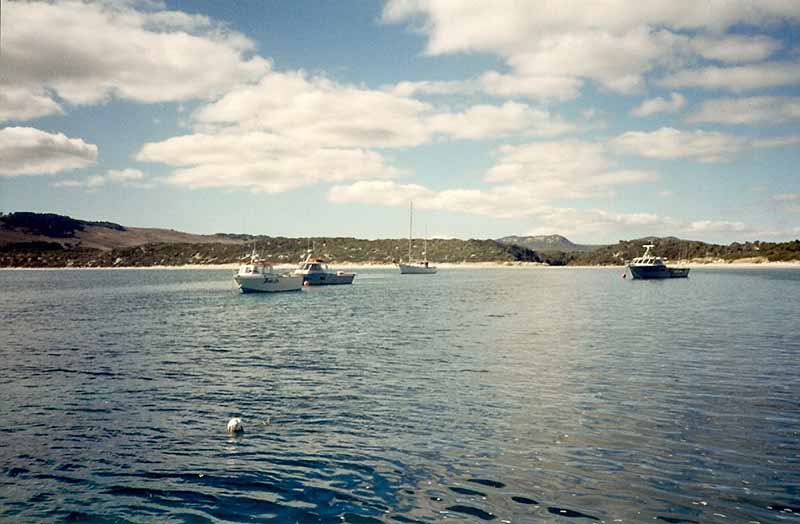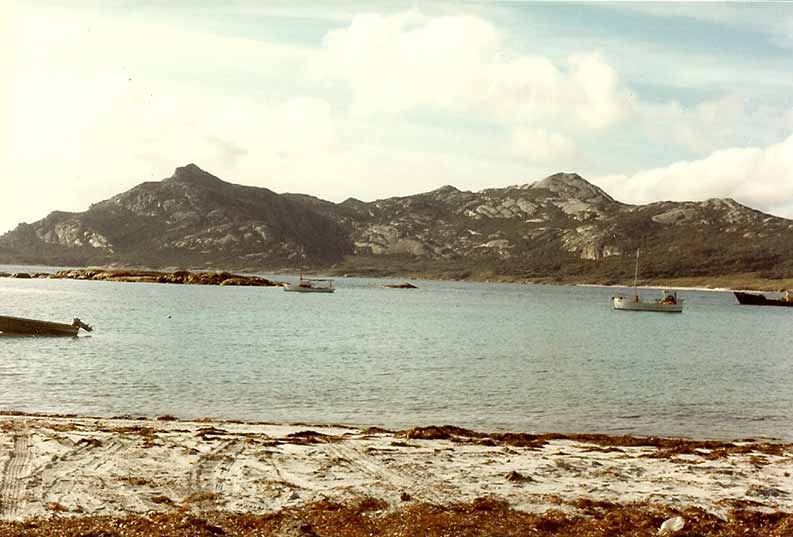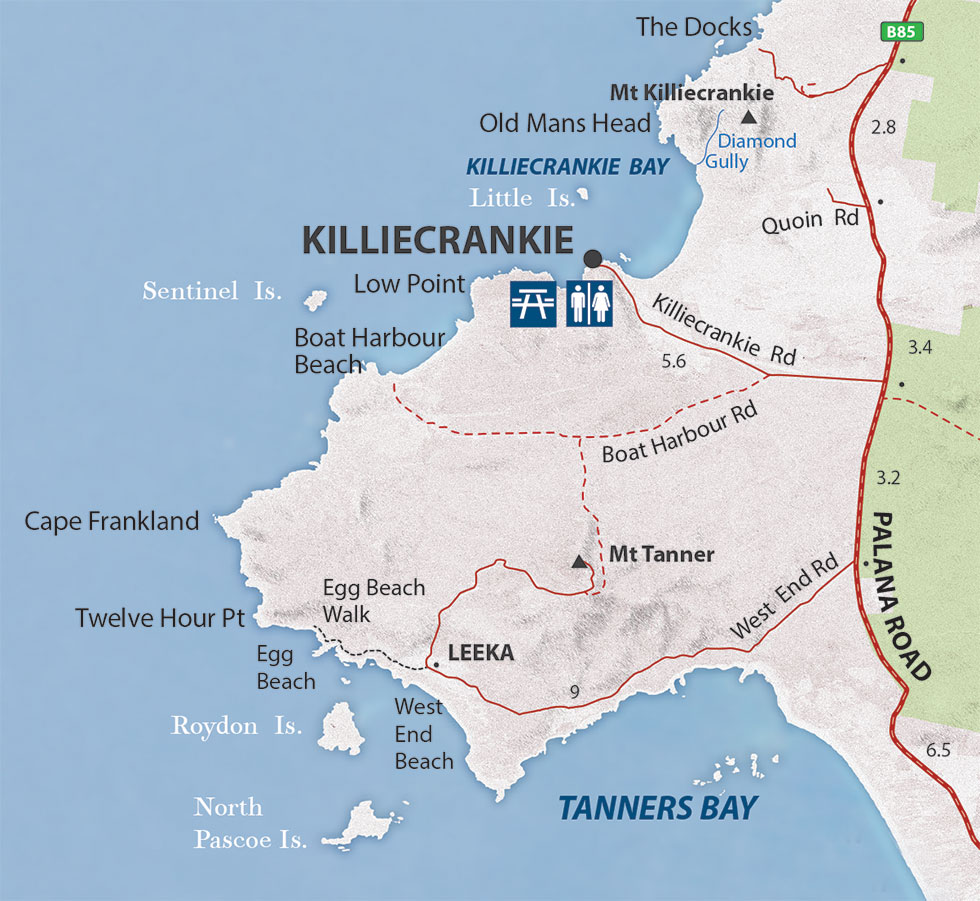For most of the 1800s, Killiecrankie was best known as a navigational feature and safe harbour on the west coast of Flinders Island.
Yes there were Killiecrankie diamonds (a form of topaz) to be found here. Plus also there was the nearby tin mining ventures in operation from the 1880s onwards.
But really it was only with the arrival of the Armstrong and Wheatley families here at the start of the 1930s that the crayfishing for which the area is renowned became Killiecrankie’s main claim to fame.
Calling Killiecrankie home ...
While first kangaroo hunters and then tin miners lived around Killiecrankie in the late 1800s, it was only after 1929 that families moved in to call Killiecrankie Bay their home.
First came the Armstrongs who relocated here from Cape Barren Island. They were followed soon after by the Wheatleys who were in the area crayfishing when their boat ‘Voana’ (out of Port Welshpool in Victoria) became weather-bound.
Clearly enjoying their enforced stay here in the shack they built on the beach, they returned soon after to build a more substantial house.
Over the following decades, several of the children who grew up here stayed on in their turn to set up their own family homes at Killiecrankie.
Their memories include how they used to walk south over Boat Harbour Bridge to West End and Tanners Bay to go to dances. Caution however was needed to keep some energy in store for the one hour plus walk back home in the early hours of the morning.
Then also there were the walks through the scrub to visit the tin miners Bun Beeton and Arthur Reynolds.
Arthur was rumoured to have had several kerosene tins full of Killiecrankie diamonds buried near his camp. If so however, no one has ever found them!
Flying in ...
The first aircraft into Killiecrankie in the 1940s didn’t land here.
Rather they flew in low over the beach and dropped off hessian bags to be filled with crayfish.
It was left to Alfred Stackhouse in the early 1960s to be the first to land here on the grass airstrip he constructed alongside the road leading into the bay.
He used it to go to some of the outer islands where he and his brother Brian ran cattle and sheep.
Over time the Stackhouse boats were sold to the Wheatley family members who had been crewing the vessels, thus helping to cement this family’s connections here.
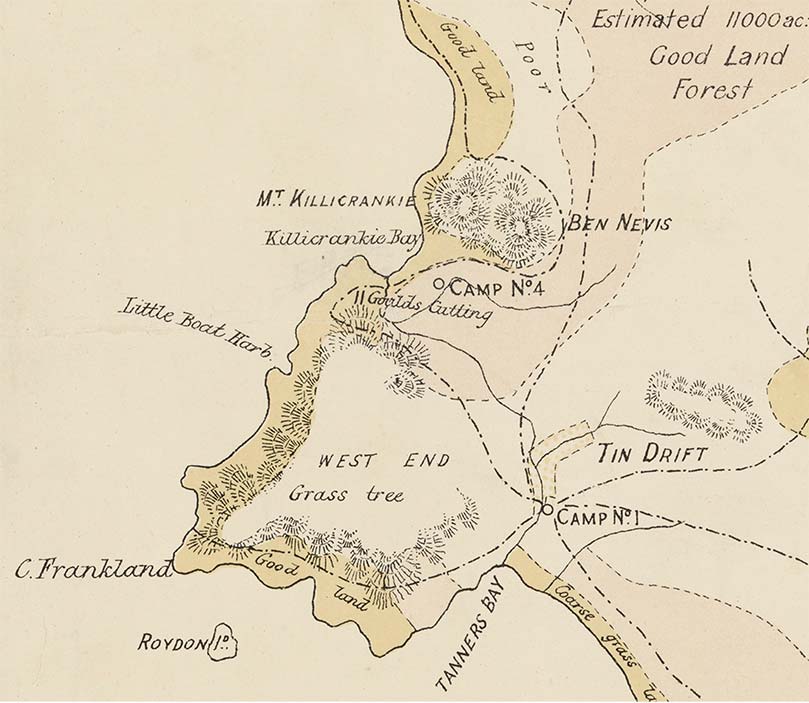
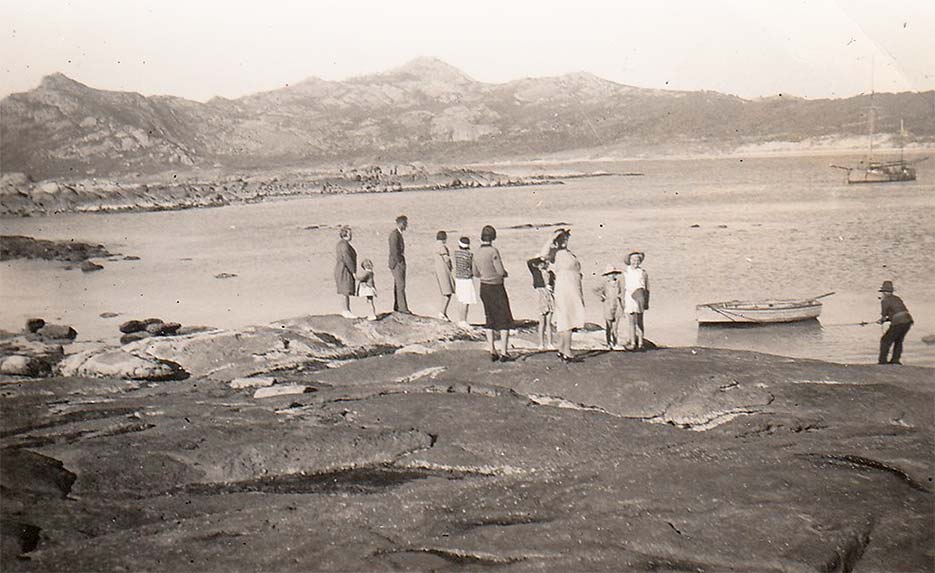
Offshore view into Killiecrankie...

Section of marine chart first compiled in 1846
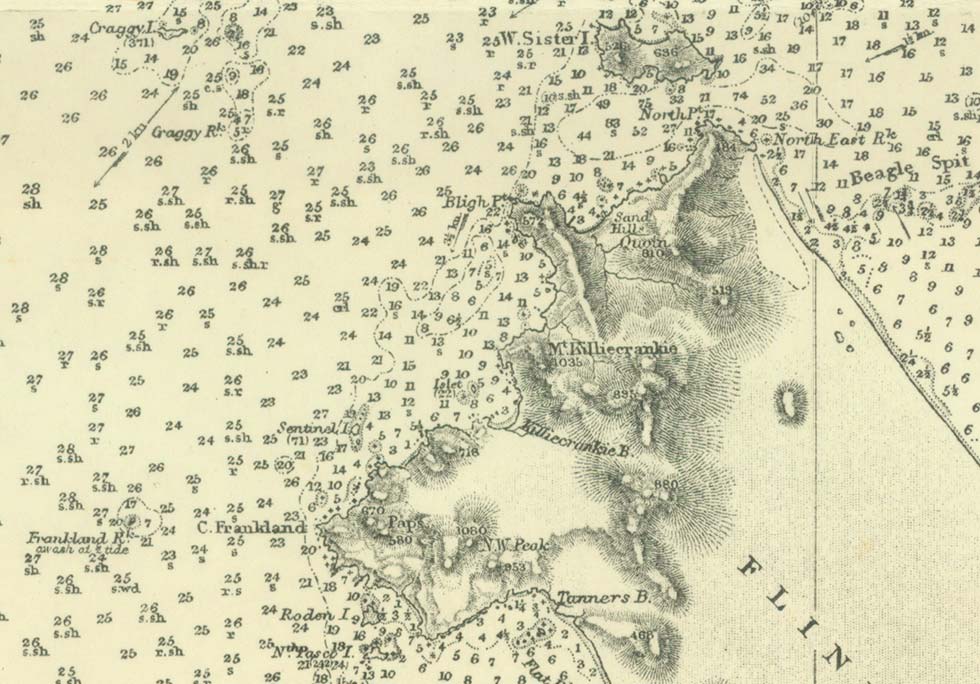
More about Killiecrankie ...
Topaz – known locally as “Killiecrankie diamonds” were first collected by tin miners in the 1800s. One well known story was that one of the miners Arthur “Kang” Reynolds, buried several kerosene tins of the stones somewhere near his camp at the Tanners Bay tin mine.
Whether it is true is anyone’s guess and whether he went back and took them away is something else that could have happened. No-one has found them at any rate. Fossickers can still find “Killiecrankie diamonds” as long as they remember that they are heavy stones which will go to the lowest point, so you do have to dig for them.
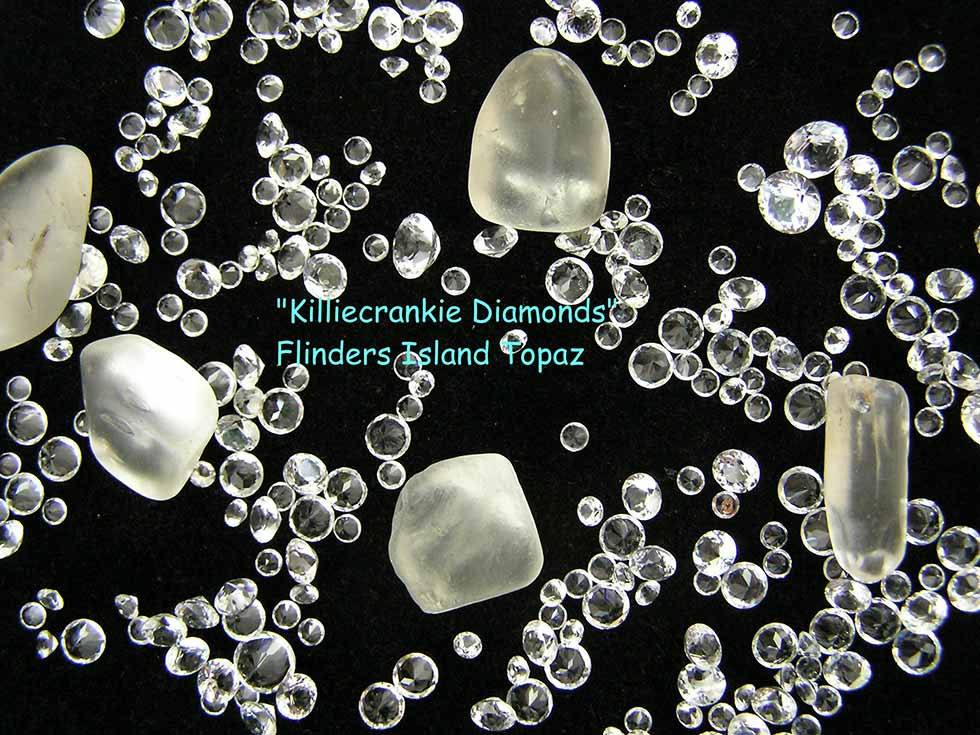
Cray fishing has been a major part of the history of Killiecrankie for many years. Bill, Cliff & Terry Wheatley were the first to live in the area and catch the crays.
They took them in their boat to Port Welshpool to sell them before arranging for the purchasers to fly them to Melbourne. Terry’s six sons and the husbands of three of his five daughters all fished out of Killiecrankie in the 1960’s and 70’s. When the quota system for crayfish came in in 2000 most of the fishermen gradually moved away from the fishing industry and the number of boats moored in the bay went from 14 to 1 now.
There are still several recreational fishers taking their pots out for a feed throughout the season.
In the summer, the Killiecrankie Yacht Club holds regular races as well as learner sessions with small sailing catamarans right through the summer. They welcome anyone who would like to try the sport and have quite a few spectators as well.
Several families have made Killiecrankie home over the years, with some members of the Armstrong, Wheatley, Purdon, Faulkner, Green and Stackhouse families either still living here or coming back for holidays. In more recent years the village has had an influx of people who have moved away from Melbourne and other cities for a more peaceful life.
Some now live here and others have a base for their holidays. From once being a fishing port Killiecrankie has now progressed to a tourism spot with “Killiecrankie diamonds”, organic olive oil which has been winning medals for its excellence, accommodation and opportunities to walk, take photos, swim, dive or go rock climbing.
Some development occurred in the years leading up to the First World War with the island’s wireless station being built here in 1913. And later came a post office shop.
Essential services for the growing community were delivered via the main wharf (now demolished) facing north into the sheltered waters of Port Davey immediately to the west. Today Emita with its stunning beaches is a popular location for the homes of locals and holiday makers.
Killiecrankie fishing ...
A series of photos taken around the bay in the mid 1980s give us an idea of the continuity of the fishing industry operations here at Killiecrankie.
